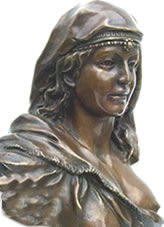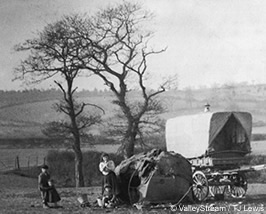
The first Gypsies arrived in Wales during the 1500s. For many years they travelled around the country on foot, horseback or in light carts. At night they slept in the open, in/under carts, or (with permission) in farmers' barns.
English Gypsies started using bender tents for shelter, and in the 19th century, it is said, John Robert Lewis of Pentrefoelas introduced benders to the Welsh.
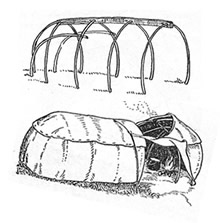
The traditional Gypsy caravan (vardo) became available in England from about 1850 but the roads of Wales weren't always suitable for such vehicles. Therefore, not so many vardos were either built or lived in here, and benders were much more prevalent.
To make a bender, firstly matched-up holes were made in the ground with the kettle-prop. Then pairs of ash, hazel or sallow rods were pushed into the holes, bent over to meet in the middle, and their tips inserted into a central long ridge pole.
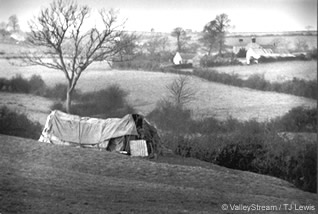
Next overlapping blankets, felts or waterproof sheets were laid over the framework and pinned together. Originally the pinthorns were made from wood, such as blackthorn, which was hardened by being stripped of bark and fried in fat; later on, the pins were made of wire or welding rod.
Often a foretent called a balk was created at the front to protect the fire or charcoal brazier, essential both for cooking and warmth. Sometimes two benders were set facing each other and were joined by a balk in the middle with a vent hole for smoke above. Usually the tents were about 5' high but the largest might be 20' long, 12' wide, and 10' high.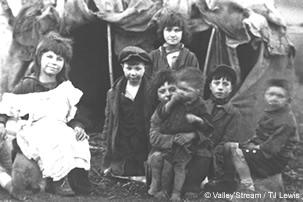
During the First World War some tents were made of the same red Melton cloth as soldiers uniforms. Earlier on, Lementina Lovell's bender, for example, comprised brown blankets.
Inside her tent the ground was covered with a carpet, and round the sides piles of straw were spread with bright rugs and firs. At the far end were inviting blankets on soft feather bedding.
A mirror and two carriage lamps were at hand for convenience, with peacock feathers and wild flowers for cheer. All these things, plus the bender's rods and blankets, could swiftly be packed up when the time came to leave, ready for the next acimasko tan (stopping place).

